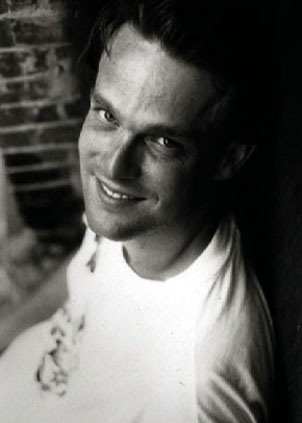| WRITINGS |  |
||
The Dave Hickey Post-Structuralist, Neo-Pragmatist Circus Comes To Town: But What's More Interesting -- The Biennial or Dave? July, 2001 Dave Hickey is an academic, but he yearns to be a man of the people. "Beau Monde: Toward a Redeemed Cosmopolitanism" illustrates his dilemma. Colorful, erotic, and brash as some pieces are, there's not a lot that 's blazingly new at SITE Santa Fe's Fourth International Biennial. Go to Burning Man, if you really want to see the cutting edge of world art. SITE's long-awaited, and long-running , exhibition of 27 artists, is loaded with aesthetic clichés, and within and behind the carefully thought out design, a lot of mediocre art. But somehow it comes together. Not as art, mind you, but as a curious manifestation of the curator, Dave Hickey. Now, you might ask, why would the Texas-born, L.A.-leaning, Vegas-residing author, professor, and critic consciously choose less-than-daunting art? My inevitable conclusion is Hickey's own: Critics don't make good curators. Hickey has seen too much art. Studied too much art. His eclectic brain is so filled with art that he has lost touch with the visceral, and, yes, "spiritual" and "elitist" qualities that can make for great and innovative work. If a Biennial should reflect a curator's "taste," as Hickey suggests, then it seems Hickey's taste veers towards the kitsch, the historicist, and the banal. It's the only rational conclusion one can draw. Otherwise, why would Hickey include a wholly unoriginal abstract like "Side Saddle," from Albuquerque's Frederick Hammersley? Or Alexis Smith's ho-hum, vaguely Southwest, carpet installation? Or Jessica Stockholder's imposing mixed media gobbledygook, only made intellectually interesting by the use of Los Alamos nuclear plant detritus? Or Kermit Oliver's cheesy "pre-Raphaelite" folk paintings? Or Graft Design's goofy fake flowers that line the outer ramp like a nightclub entrance at Berlin's Love Parade? The reasons are nowhere apparent in the art, in the space, or in the "cross-generational intersection" of the various artists, as Hickey touted to a tent full of journalists this past Thursday, and as some dutiful fans echoed in refrain. The reason must be in the complex mind of Dave Hickey. A mind that likes to "tap dance" around truths, as one journalist commented at the press shindig. Though it's hard to imagine the gleefully overweight, chain smoking, bear of a curator doing much elaborate movement at all, perhaps tap dancing is easier than giving clear and distinct explanations of works that are not that provocative, or discomforting, or "propositional," or memorable, or, in many cases, even Hickey's stated aim of being "accessible," and, thus, don't really merit much analysis, even the smidgen of overintellectualizing Hickey provided about "fabrication" and "talismans." Maybe Mr. Hickey doesn't want to explicate specific works not only because that would be gauche in almost any public context, but because that would put him right back in the academic/institutional art ghetto he, and his vague "new paradigm" of "private artistic endeavors," is supposedly trying to escape. For once, let's not academicize a Biennial, critic Hickey seems to say. That's a trite and boorish "post-minimalist" faux pas. Let's riff on the broader art culture instead (after all, it might be a way to make sense of the art on view). This is Hickey's strong suit. And it was clearly exhibited at Thursday's media event, despite the curator's clear intention to not steal the show from the artists. His clever, culturally cross-referenced commentary indicated a wild and charismatic intelligence. The sound bites flowed: --"I do think L.A. is the center of the art world at the moment." --"Most computer art is just corny." --"Santa Fe is a town much taken with one's emotional temperature. People here ask me if I am happy. Happy is a dwarf in a movie for kids." But it is one of his last zingers that caught the temperature best: --"Everybody comes to Santa Fe in different cars, different hair, different clothes. Then, once here, everyone gets the same car, the same haircut, the same clothes.... This exhibit shows the cosmopolitan roots of this town." In other words, at the SITE Biennial, one will encounter graffiti art, postmodern art, op art, pop art, silly art, and outright tacky art, from both coasts, six countries, and several different subcultures. You won't find a deification of Santa Fe style, but you will find the urban horrors and aesthetic "impurities" locals hoped to leave behind in moving to the "the beautiful world" of Santa Fe. Is this a master prank on "the city different?" A wakeup call? However you come down on those questions, and on the show itself, all opinions head back to Hickey. And "Dave" can't do much, even with a kind of Duchampian silence, to shift the direction of that gaze. He is simply more captivating than his "fantasy football team" of artists. The gaggle of journalists wasn't running up to those artists after the Hickey press conference. They weren't even rushing back into the SITE space. They were hovering around Hickey himself, The Critic as art superstar. |
|||
| HOME WRITINGS RESUME PRESS CONTACT BACK TO TOP | |||